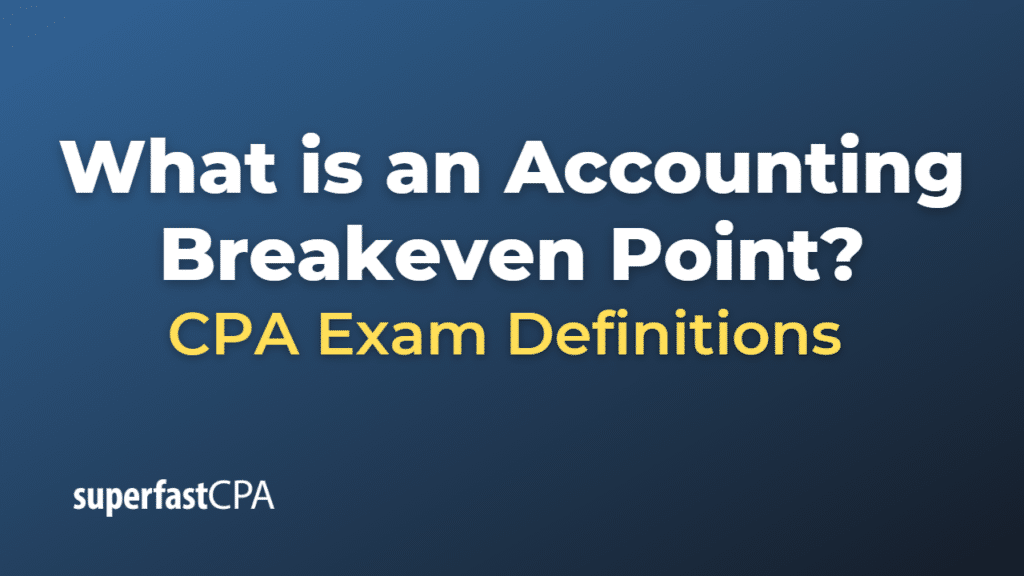Accounting Breakeven Point
The accounting breakeven point, also known as the break-even point (BEP), is the level of sales at which a business neither makes a profit nor incurs a loss. It is the point where a company’s total revenues equal its total expenses. The accounting breakeven point is a critical financial metric that helps businesses understand the minimum sales volume required to cover their costs and determine the viability of their products or services.
The breakeven point can be calculated using the following formula:
Breakeven Point (in units) = Fixed Costs / (Selling Price per Unit – Variable Cost per Unit)
Where:
- Fixed Costs: Costs that remain constant regardless of the number of units produced or sold, such as rent, salaries, and insurance.
- Selling Price per Unit: The amount the company charges for each unit of its product or service.
- Variable Cost per Unit: Costs that change in proportion to the number of units produced or sold, such as raw materials and direct labor.
Once the breakeven point (in units) is calculated, it can be multiplied by the selling price per unit to find the breakeven point in terms of sales revenue.
It is important to note that the accounting breakeven point does not take into account non-cash expenses such as depreciation and does not factor in the time value of money or the cost of capital. In financial analysis, the concept of financial breakeven point, which considers these factors, may be more relevant for evaluating a project’s viability.
Example of an Accounting Breakeven Point
Let’s consider a fictional example of a small bakery called “Delightful Bakes” to illustrate the calculation of the accounting breakeven point.
Delightful Bakes sells a single type of cake for $10 per unit. The variable cost per unit, which includes the cost of ingredients, direct labor, and packaging, is $4. The bakery incurs fixed costs of $6,000 per month, including rent, utilities, and administrative salaries.
To calculate the accounting breakeven point, we can use the formula:
Breakeven Point (in units) = Fixed Costs / (Selling Price per Unit – Variable Cost per Unit)
Breakeven Point (in units) = $6,000 / ($10 – $4) = $6,000 / $6 = 1,000 units
This means that Delightful Bakes needs to sell 1,000 cakes per month to break even. At this sales volume, the bakery will cover all of its fixed and variable costs, and its total revenues will equal its total expenses. If the bakery sells more than 1,000 cakes per month, it will generate a profit; if it sells fewer than 1,000 cakes, it will incur a loss.
To find the breakeven point in terms of sales revenue, we can multiply the breakeven point in units by the selling price per unit:
Breakeven Point (in revenue) = 1,000 units × $10 = $10,000
So, Delightful Bakes needs to generate at least $10,000 in sales revenue per month to break even.
By understanding its breakeven point, Delightful Bakes can better assess the viability of its business model, set sales targets, and make informed decisions about pricing, production, and marketing strategies.













